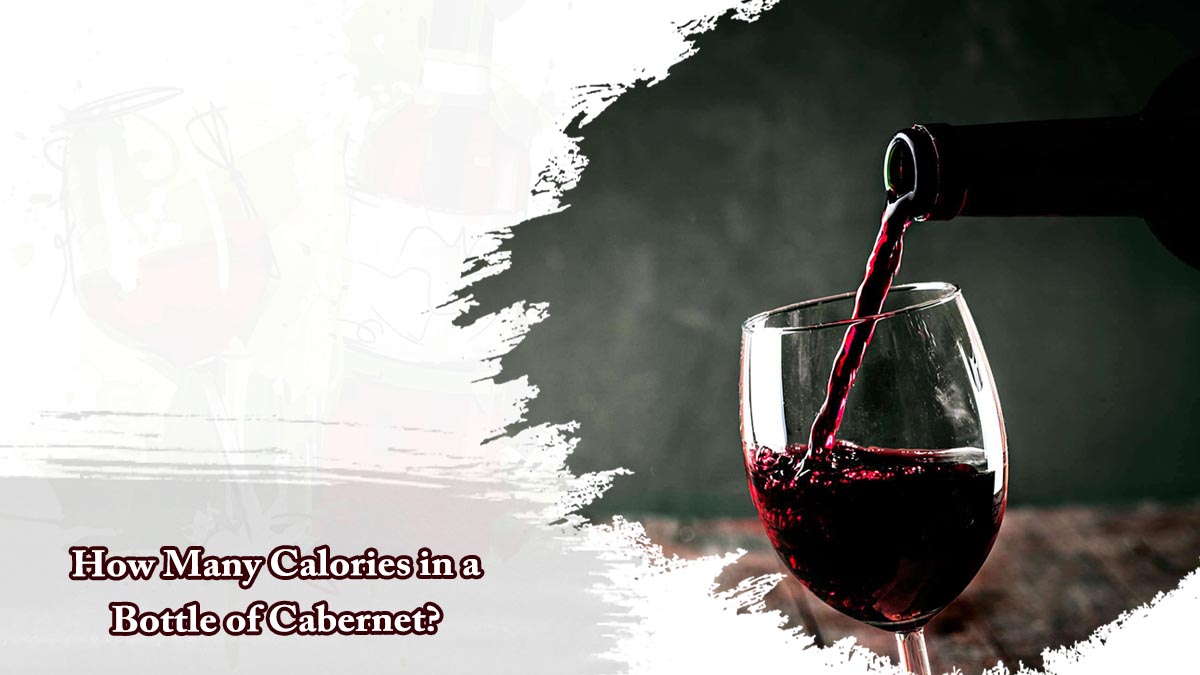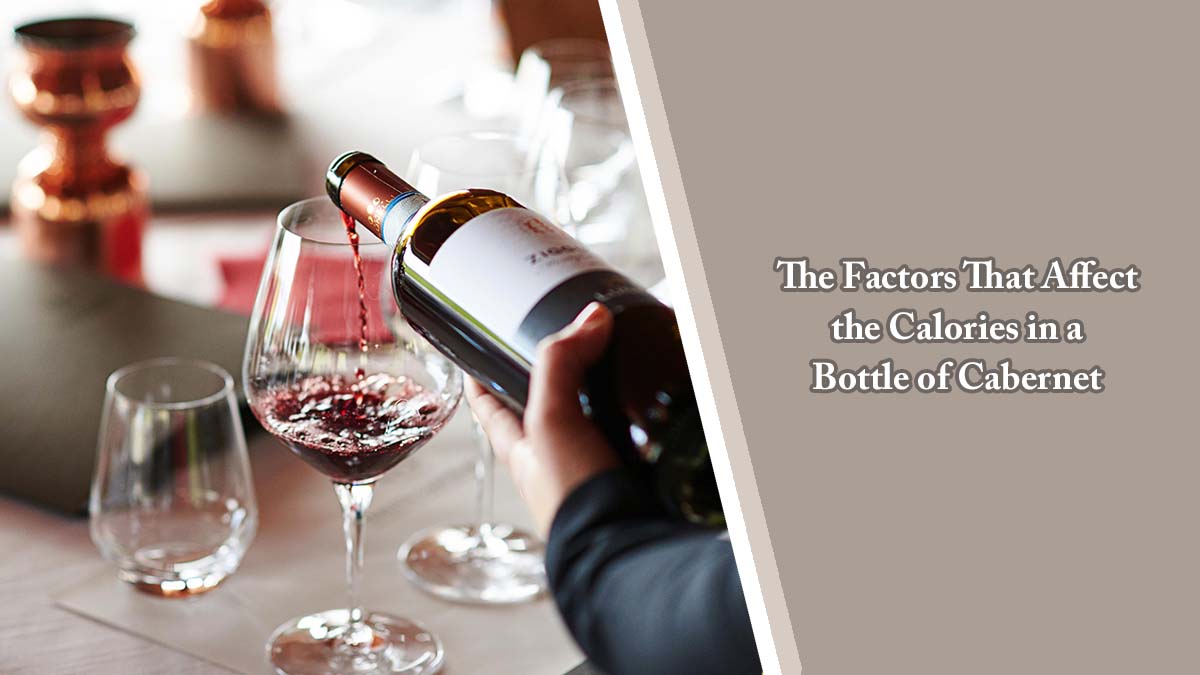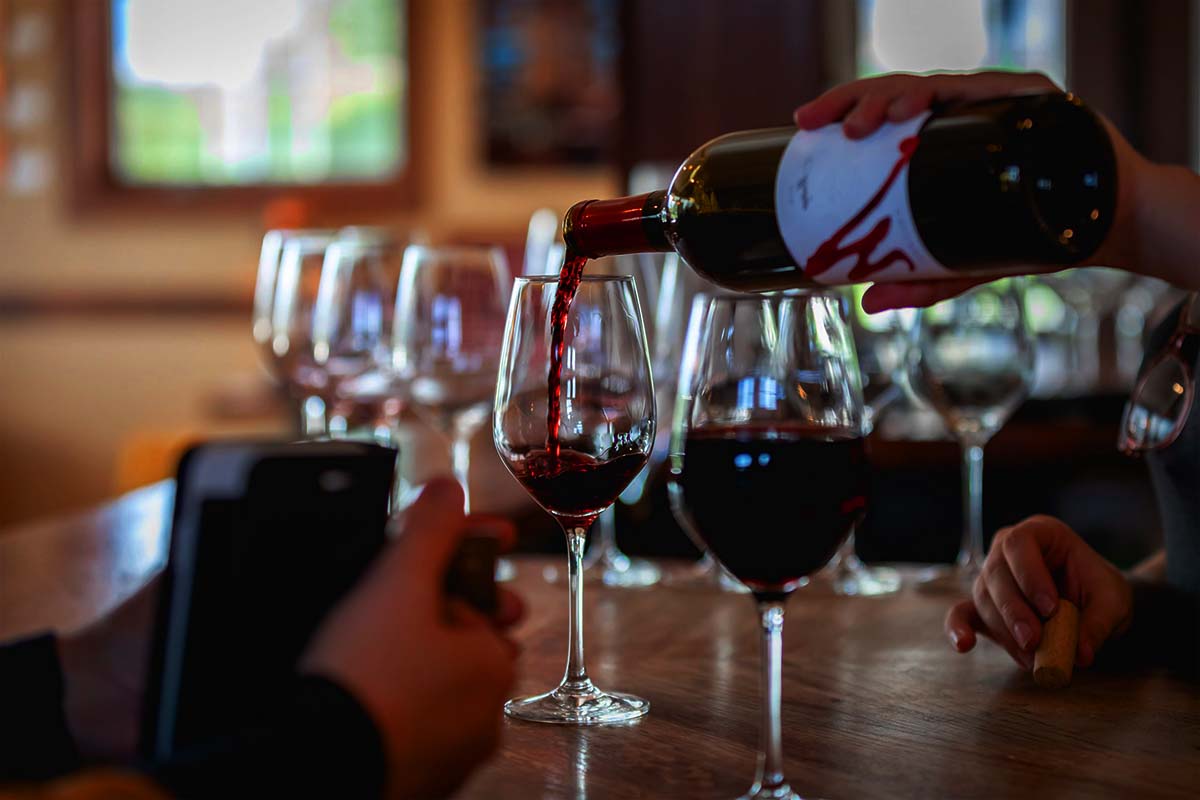How Many Calories in a Bottle of Cabernet?
Do you love the rich flavor of a nice Cabernet but are conscious about counting calories? Are you concerned that indulging in your favorite bottle could send your nutrition goals off track? We understand! After all, who doesn’t enjoy unwinding with a glass or two of wine at the end of their day? Not to worry — today, we’re here to shed some light on one of the most common questions around adult beverages: How many calories in a bottle of Cabernet anyway?
In this blog post, we’ll discuss everything from what factors affect caloric content and more – so keep reading for everything there is to know about this beloved vino.
How Many Calories in a Bottle of Cabernet?
If you are watching your calorie intake, it’s important to be mindful of the calories in your alcoholic beverages. Cabernet Sauvignon is a popular red wine choice for many people, but how many calories are in a bottle of Cabernet? The answer depends on several factors, including the alcohol content, the size of the bottle, and any additives that may be present.
On average, a typical 750ml bottle of Cabernet Sauvignon contains around 625 calories. However, this number can vary widely based on the specific brand, vintage, and winemaking techniques used. In general, wines with higher alcohol content will have more calories per serving than those with lower alcohol content.
It’s also worth noting that many wineries and wine producers add sugar or other additives to their wines, which can increase the calorie count. To get an accurate idea of how many calories are in a specific bottle of Cabernet Sauvignon, it’s important to check the nutrition information provided by the winery or check online resources for this information.
While wine can be a great addition to a meal or a relaxing way to unwind after a long day, it’s important to consume it in moderation to avoid excess calories and potential health risks. As a general rule, it’s recommended that women consume no more than one glass of wine per day, while men should stick to no more than two glasses per day. If you want to know more, read it!
The Factors That Affect the Calories in a Bottle of Cabernet
One thing that many wine enthusiasts might not be aware of is the number of calories in a bottle of Cabernet. The calorie count in a bottle of Cabernet can vary depending on several factors. Now, we will explore the various factors that can affect the calories in a bottle of Cabernet.
1. Alcohol Content – the higher the alcohol content of a bottle of wine, the higher the calorie count will be. Cabernet Sauvignon usually has a higher alcohol content than other wine varietals, which can contribute to a higher calorie count. A typical Cabernet Sauvignon can have an alcohol content ranging from 13.5% to 15%, with some higher-end wines having even higher alcohol content.
2. Residual Sugar – residual sugar is the naturally occurring sugar in grapes that is not converted to alcohol during the fermentation process. The higher the residual sugar content, the higher the calorie count will be. Cabernet Sauvignon is not typically known for its sweetness, but some producers use techniques like extended maceration to extract more sugar from the skins, resulting in a slightly higher residual sugar content.
3. Serving Size – the standard serving size for wine is 5 ounces, but many people pour themselves a much larger serving, which will increase the calorie count. A 5-ounce serving of Cabernet Sauvignon contains approximately 123 calories, but a 9-ounce serving will contain around 221 calories. It is important to keep an eye on serving sizes to prevent overindulging and consuming too many unnecessary calories.
4. Winemaking Techniques – winemaking techniques can also affect the calorie count in a bottle of Cabernet Sauvignon. Some winemakers use oak chips or other additives during the aging process, which can add additional calories to the wine. Other winemakers may use different techniques to extract more tannins or color from the grape skins, resulting in a different calorie count.
5. Aging – the longer a wine is aged, the higher the calorie count will be. Older wines tend to have a higher alcohol content and may also have more residual sugar. Aging can also result in changes to the flavor profile of the wine, which can make it more appealing to some individuals.
There are several factors that can affect the calorie count in a bottle of Cabernet Sauvignon. Alcohol content, residual sugar, serving size, winemaking techniques, and aging can all play a role in determining the final calorie count. It is important to be aware of these factors when consuming wine and to practice moderation to prevent consuming too many unnecessary calories. Remember to always enjoy wine responsibly and in moderation.
The Recommended Serving Size for Cabernet
Enjoying a glass of Cabernet Sauvignon is an enjoyable experience, but it’s important to understand the nutritional information before indulging. The calorie count in a bottle can differ depending on its alcohol content, residual sugar level, and winemaking techniques used during production.
Additionally, how much you choose to pour into your glass also has an effect – while 5 ounces may be considered one serving size for wine drinkers looking to moderate their intake; larger amounts will equate with higher calories consumed. Therefore knowing recommended portions along with other factors mentioned above are essential when selecting which type or brand of cabernet suits best!
Tips for Tracking Your Daily Caloric Intake from Alcohol Consumption
Tracking your daily caloric intake from alcohol can help you make more informed choices about your drinking habits. In this section, we will provide you with tips for tracking your daily caloric intake from alcohol consumption.
1. Learn the Calorie Content of Your Drinks
Different types of alcohol contain varying amounts of calories. For example, a 12-ounce bottle of beer typically contains around 150 calories, while a 5-ounce glass of wine has around 125 calories. Hard liquors like vodka or whiskey, when mixed with sugary drinks like soda or juice, can add up to as much as 300 calories per drink. Learning the calorie content of your drinks can help you make better choices about which drinks to consume.
2. Keep a Record of Your Drinks
Keeping a record of the drinks you consume can help you track your daily caloric intake from alcohol. There are plenty of apps and websites dedicated to helping people track their drinking habits, as well as physical journals where you can jot down the date, type of drink, and number of calories consumed. By keeping track of your drinks, you can create a visual representation of your drinking habits and identify patterns that may be negatively impacting your health and diet.
3. Know Your Limits
Moderate alcohol consumption is defined as one drink per day for women and two drinks per day for men. Drinking too much can increase your risk of health problems and negatively impact your diet. Knowing your limits and sticking to them can help you maintain a healthy balance between alcohol consumption and calorie intake.
4. Make Smart Drink Choices
When you do choose to drink alcohol, there are ways to make smarter choices that can help you reduce your caloric intake. For example, sticking to low-calorie drinks like light beer or wine can help you reduce your calorie intake. You can also choose to drink plain alcoholic drinks like vodka or whiskey on the rocks or mixed with soda water, which contains fewer calories than sugary mixed drinks. Swapping out sugary mixers for fresh fruits or herbs can also help you reduce your calorie intake.
5. Be Mindful of Alcohol’s Effects on Your Diet
Finally, it is important to be mindful of alcohol’s effects on your diet. Drinking alcohol can lower inhibitions and make it harder to resist high-calorie foods, leading to overeating. It can also disrupt sleep, which can lead to increased appetite and cravings. Being aware of these effects can help you make smarter choices about your alcohol consumption and avoid derailing your diet and weight loss goals.
Tracking your daily caloric intake from alcohol consumption is an essential step for maintaining a healthy balance between drinking and dieting. By learning the calorie content of your drinks, keeping a record of your drinks, knowing your limits, making smart drink choices, and being mindful of alcohol’s effects on your diet, you can take control of your drinking habits and avoid the negative health consequences of excessive alcohol consumption. Remember, it is always important to drink in moderation and make responsible choices to maintain your health and well-being.
FAQs
How many carbs are in a bottle of Cabernet?
Typically, a 5-ounce glass of Cabernet Sauvignon contains 3.8 grams of carbohydrates, so a 750ml (25.4 oz) bottle of Cabernet contains 19.3 grams of carbs. This is because the majority of calories in red wine come from alcohol, not carbohydrates.
However, the carb content can vary slightly depending on the type and how it is made. For example, sweet wines such as Port or Moscato will generally have more carbs than dry varieties like Chardonnay or Pinot Noir. Additionally, some winemakers may add residual sugar to the wine which can increase the carbohydrate count.
What is the alcohol content of a bottle of Cabernet?
The alcohol content of a bottle Cabernet varies depending on the vintage. Generally, most bottles range from 13.5% to 15% alcohol by volume (ABV). The amount of alcohol volume is determined by the winemaking process, as grapes contain a certain percentage of natural sugar that then converts to alcohol during fermentation. So a wine with higher residual sugar will likely have a lower ABV and vice versa. Aging also plays a role as wines aged in oak barrels may gain more complexity and additional alcohol levels, thereby increasing their ABV percentage.
Does Cabernet pair well with cheese?
Yes, Cabernet is a great wine to pair with cheese. Cabernet Sauvignon has rich and full-bodied flavors that complement many types of cheese. Aged cheddar, for example, will balance out the tannins in the Cabernet and bring out its fruity notes. Other classic pairings include Parmigiano-Reggiano and Gouda with Cabernet Franc or Emmental with Merlot. The key is to match the strength of the cheese with the boldness of the wine so that neither overwhelms the other. Enjoying the combination of these two classic favorites together can be a truly delightful experience!
Does the age (vintage) matter when it comes to drinking good quality Cabernets?
When it comes to drinking good quality Cabernets, the age (vintage) of the bottle can have a major impact on the taste.
Generally speaking, as wine ages, its flavors become more rounded and complex while its tannins soften. While more mature wines are typically considered to be of higher quality, this may not always be the case depending on the specific wine’s characteristics. For example, an overly-oaked young Cabernet may offer a more balanced flavor than a less-oaked older Cabernet. Therefore, when selecting a high-quality Cabernet, it is important to consider not just its vintage but also other factors such as winemaking practices and grape varietals used in production.
Additionally, many wine experts recommend aging certain Cabernets for optimum flavor for up to 10 years or more before consuming them. To make sure that you’re drinking your Cabernet at peak flavor potential, it is best to refer to expert advice from wine aficionados as well as reliable tasting notes available online or in magazines.
Is Cabernet Sauvignon high in sugar?
No, Cabernet Sauvignon is not high in sugar. This red wine varietal typically contains 1.12 grams of sugar per 6 oz glass, which is low compared to other wine varieties such as Riesling and Gewurztraminer. The sweetness of a Cabernet Sauvignon is minimal and often undetectable to the palate. Instead, it tends to be full-bodied with high tannin levels, moderate acidity, dark fruit flavors of blackcurrants and plums, and an herbal finish.
Conclusion
In conclusion, Cabernet is a great choice when it comes to wine. Whether you’re having a cozy night in, attending a special event, or just want to treat yourself, this type of wine is sure to satisfy you.
With that being said, it’s important to be mindful of the number of calories that come from drinking this particular type of beverage – a bottle of Cabernet can contain as much as 625 calories! It is vital to watch your portion sizes and take into account all other sources of calories consumed during the day. Remember to always drink responsibly and stay within the healthy range for calcium intake.
Thanks for reading and allowing me to go over all about how many calories are in a bottle of Cabernet – I hope this will guide you in knowing exactly how much you should serve yourself if you’re indulging in this fabulous beverage. Thank you for taking the time to read through my blog and I am looking forward to hearing from you soon! Visit our Website for more interesting posts.

I am Thomas Delange, CEO of McMahon’s Public House bar. I have a passion for restaurants and cooking & wines, and I love to spend my free time experimenting in the kitchen. I’ve worked hard to make McMahon’s one of the most successful bars in the city. When I’m not working, I enjoy spending time with my friends and family.



